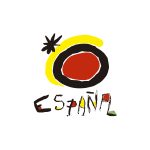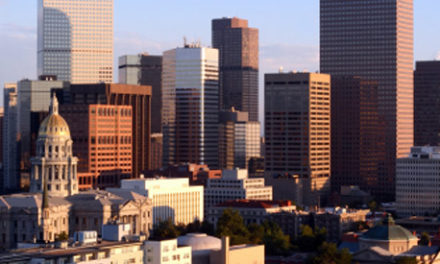Located on the northwest Atlantic coast of Spain in Basque Country, San Sebastian’s reputation began as a summer holiday destination. But conventions, meetings and special events have turned this city along La Concha Bay into a year-round destination.
San Sebastian is romantic and enchanting, and it has it all — a mild climate (year round), amazing restaurants, exclusive shopping, Spanish fashion, sports (both water and land), neoclassic and modern architecture, a fantastic Old Town, state-of-the-art business venues, and a strong commitment to hospitality. San Sebastian has also become known as one of the greatest culinary capitals in the world.
 Tapas tours, pintxos workshops, cooking classes, private dinners, wine tastings and walking culinary tours of San Sebastian are just a few of the programs that can be incorporated into a meeting, incentive or other special event here.
Tapas tours, pintxos workshops, cooking classes, private dinners, wine tastings and walking culinary tours of San Sebastian are just a few of the programs that can be incorporated into a meeting, incentive or other special event here.
Gabriella Ranelli de Aguirre of Tenedor Tours (based in San Sebastian) is a a highly recognized Spanish wine and food specialist who is an excellent resource. She offers half day, full day and multi-day programs, and served as one of the guides who provided me with an overview of the Basque region.
Three days is perfect in San Sebastian, and it seems that more of us in the international business tourism sector may want to get to know this area better. Just under 500,000 visitors make their way to San Sebastian each year, and more than 200,000 are from outside of Spain. San Sebastian is truly a resort city that’s made for small to mid-size meetings, incentives and large conventions. And the number of visitors continue to increase, according to data from the San Sebastian Turismo & Convention Bureau.
“With appealing and spacious avenues, San Sebastian offers a certain elegance and grace which is unusual for a seaside resort,” explains Robert Lee, director of sales for GEP Destination Management Spain in Madrid, which organizes corporate events throughout Spain, including San Sebastian.
Here’s what you need to know if you’re planning a meeting or visiting San Sebastian.

Basque Culinary Center
San Sebastian is known for its food, and the Basque Country is perhaps the most important culinary destination in Spain — with more Michelin stars per square meter than anywhere else in the world. Influenced by nouvelle cuisine that originated in France during the 1960s, Basque nouvelle cuisine emerged during the last several decades by retaining the region’s local character and applying new techniques to the top quality ingredients from its lands, gardens and waters — fish, seafood, fresh and cured meats, and vegetables.
The result has influenced gastronomy in the international community. And the Basque Culinary Center is a university that opened in 2011 to prepares chefs and teaches them all aspects of restaurant management — including how to establish their own (170 students in its first year and nearly 25% were foreign).
Located about 15 minutes outside of the city center, this facility is architecturally amazing with five levels shaped liked a stack of plates. Equipped with state-of-the-art kitchens, exhibition space, classrooms and an auditorium, the Basque Culinary Center is the perfect space to host industry related conferences and meetings. In fact, 94 events for external organizations were hosted there in 2012 (not bad for a brand new facility).
The Basque Culinary Center also offers a daily lunch where students get an opportunity to fully develop their skills and the public has an opportunity to enjoy the upscale dining at a very reasonable price (open to the public). The day I visited, they served pumpkin soup, egg with spinach, beef cheek and fruit for dessert — and lots of wine.
Kursaal Convention Center
Located in a prime focal point in the city and directly on the sea, Kursaal Congress Centre and Auditorium (designed by Spanish architect Rafael Moneo) is a completely flexible space that is transformed to host a range of meetings and special events throughout the year, including the annual San Sebastian Film Festival and the International Jazz Festival.
So that means Kursaal’s multifunctional spaces are capable of being transformed into anything a meeting planner could expect. It has two auditoriums (capacities for 1,806 and 624), exhibition space with more than 5,000 square meters, 20 meeting rooms (up to 575 people) and a banquet hall that can handle up to 1,000 guests.
And the other standouts to me is the outdoor terrace where you can host a beachfront reception and that the building’s two glass structures that face the sea and can be illuminated with any message or design at night. Kursaal was opened in 1999 and fits in perfectly with the cityscape.
Hotels in San Sebastian, Spain
San Sebastian has 30 hotels in the one to five star categories. Located just down the street from Kursaal is Hotel Maria Cristina, a Luxury Collection Hotel (Starwood Preferred). It first opened in 1912 and still retains its Golden Age style. This is the only five star hotel in San Sebastian, and it has 136 guest rooms. There are three function rooms for meetings, banquets and events. Whether you’re staying here or not, the DRY Martini Bar in the lobby is a great gathering spot for pintxos and light gourmet.
Things to Do in San Sebastian, Spain
The Old Town is where you will find plazas, churches, souvenir shops, markets, cafes and pastry shops. And you’ll definitely want to dine like a local by hopping from bar to bar to bar — enjoying pintxos (tapas) and drinking wine (Txakoli is a young and fruity, local white wine). It’s a great way to spend an afternoon, and even a better way to spend a lively evening. And foodies should definitely stop at Mercado de la Brexta in the Old Town during the morning to see the freshest catch and produce.
For activities, the San Sebastian Aquarium Auditorium is located on the fishing harbor by the Old Town, and it has fantastic views of the city and Concha Bay. It’s home to sharks, turtles and hundreds of marine species. The tank holds nearly two million liters of water and has a tunnel passing through it. The Aquarium is a great place for families. And its onsite restaurant, Restaurante Bokado Mikel Santamaria, serves Basque food and bite-sized cuisine (they also a terrific outdoor terrace). For meetings, there’s an auditorium that holds up to 170 people (with separate access), and the Aquarium is popular for dinners and cocktail parties.
San Telmo Museum (also known as Municipal Ethnography and Fine Arts Museum) is an ancient Dominican convent housed in an impressive 16th century building with a modern extension that houses the Municipal Ethnography and Fine Arts Museum. It includes archeology, fine arts, ethnography and history. While the museum has some space to hold smaller meetings, the church is its unique space for product launches, cocktail parties, gala dinners, concerts and other events. The facility has retained the San Telmo Church’s original character and the cloister is a historic space that dates from the 16th century with an outdoor garden. The catering team can handle groups for both indoor and outdoor events.
Of course, there are plenty of tourist shops in the Old Town where you can stop and pick up gifts, but the fashionable San Sebastian shopping is located on the other side of Avenida, also known as the Boulevard (which is where the walls of the city were torn down). This is where you can find perfumeries, florists, jewelers, Spanish clothing designers, art galleries, toy shops, kitchenware and more.
Gabriella guided me through San Sebastian’s touristy and most fashionable shopping. Where did we stop?
- BAR NE STOR — Iberian ham and culinary supplies (opened in 1980)
- Bordaberri — cured meats, cheeses and produce
- Solbes — a general local market (with a great wine selection)
- Casa Ponsol — hats and berets (opened in 1838)
- Minimal — ladies’ fashions
- Benegas — local perfumes and Guerlain products (opened in 1908)
- BOX — makes custom leather goods in its workshop located onsite (opened 1965)
I would really like to go back there to get a leather jacket one day. - Frida — offers unusual clothing and accessories
- El Hangar — a younger shop with cute things
- Tous — a popular for its costume jewelry
- Arrabetletz — a boutique that has posh ladies dresses with French brands
- Chocolates de Menardo
My best advice is to explore San Sebastian on foot, including walking tours. And be sure to go to view the city from Mt. Igueldo at the edge of the shell-shaped bay and beach. And down below, check out Chillida’s Comb of the Wind sculptures. These iconic sculptures are made of steel and are anchored into the rocks along the edge of San Sebastian’s coastline.
And while I didn’t have an opportunity to see it for myself, Lee recommends Miramar Palace as a potential venue for gala dinners. This is a royal palace that was created for Queen Maria Cristina and the Royal Family after she chose San Sebastian for her summer residence in 1887. It enjoys impressive views of two beaches in the bay and the Ilsnad of Santa Clara, which is directly opposite.
If you’re looking for a couple of unique nearby spots, within 30 minutes you can find the Balenciaga Museum in Getaria, a small, charming fishing village with restaurants renowed for grilled fish and Txakoli wine. This museum showcases the dresses of fashion designer Cristobal Balenciaga. (It is also a unique venue for private events.)
Cider houses are hidden dining gems in the Basque Country, so it may be worth traveling 15 to 30 minutes to find a great cider house. I visited and had dinner at Petritegui Cider House in Astigarraga. It’s rustic and seems to be frequented primarily by local men. A visit here includes an explanation of the tradition and history of cider. Petritegui has its own apple orchard, and an amazing barrel room (group tours are offered). Cider houses typically have a set menu for the locals, and offer extremely high quality Basque gastronomy. Petritegui’s menu included tortilla of codfish, fired codfish, grilled chop and cheese with quince and walnuts.
Logistics in San Sebastian
San Sebastian has five airports that are within about 60 miles of San Sebastian with San Sebastian Airport being the closest. Others include Bilbao Airport (with direct connections throughout Europe), Biarrit Airport (France), Pamplona Airport and Vitoria Airport. Ground transportation is very efficient in Basque Country, including car services and shuttles. The RENFE connects San Sebastian to many cities throughout Spain by train.
Updated. Initially published December 6, 2013.




















